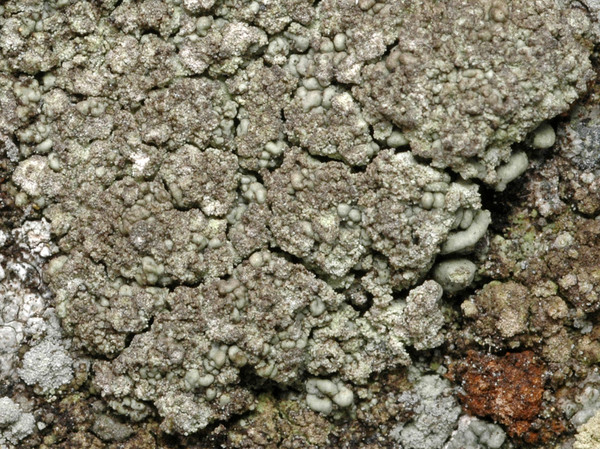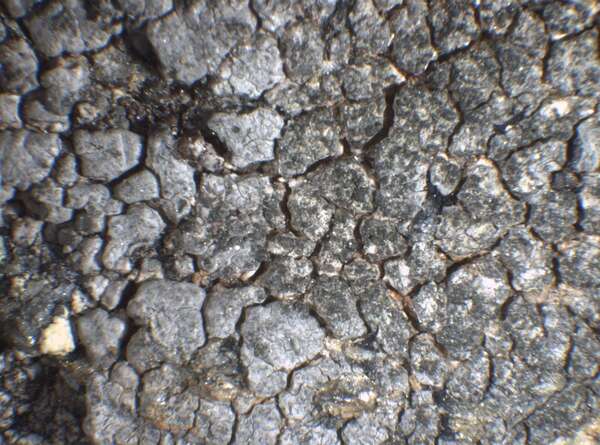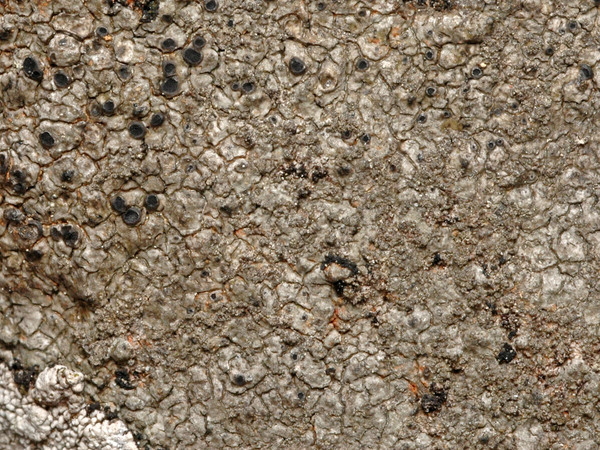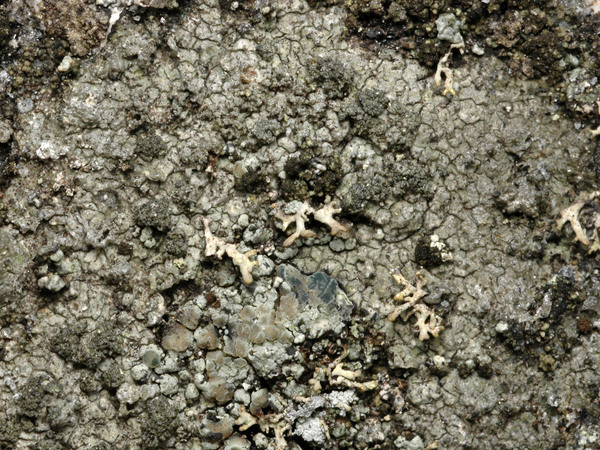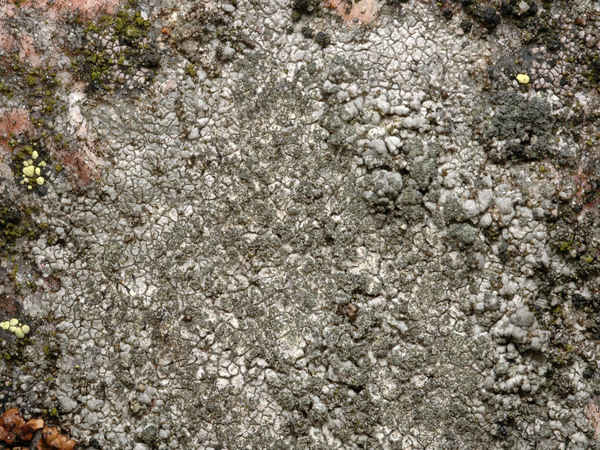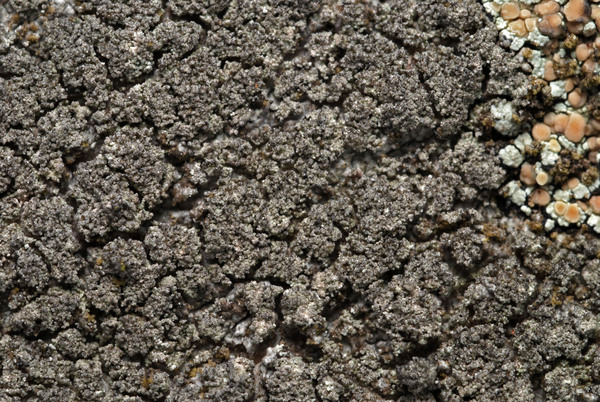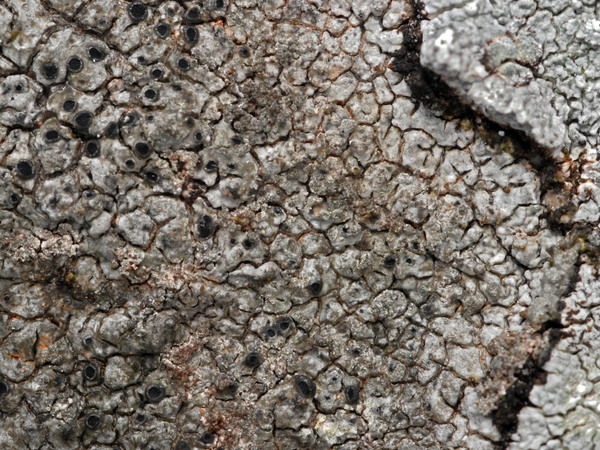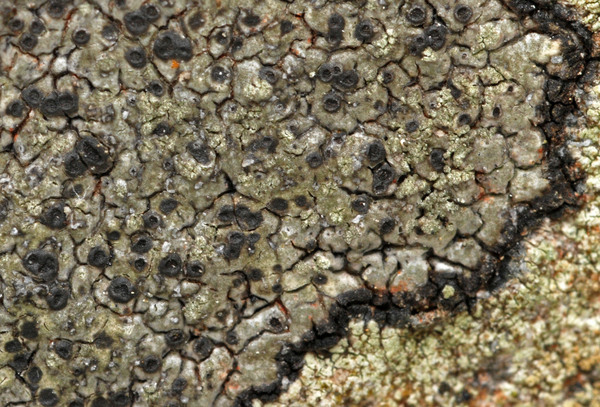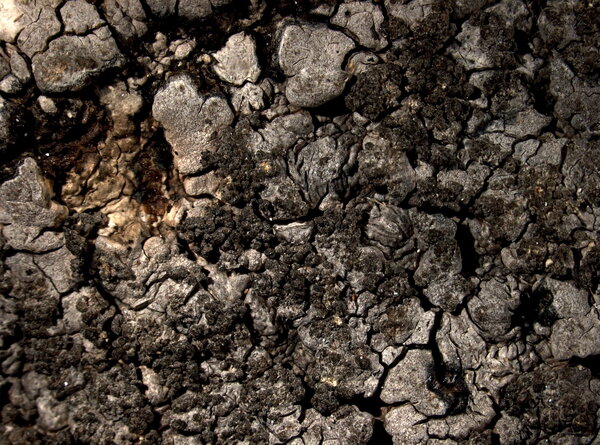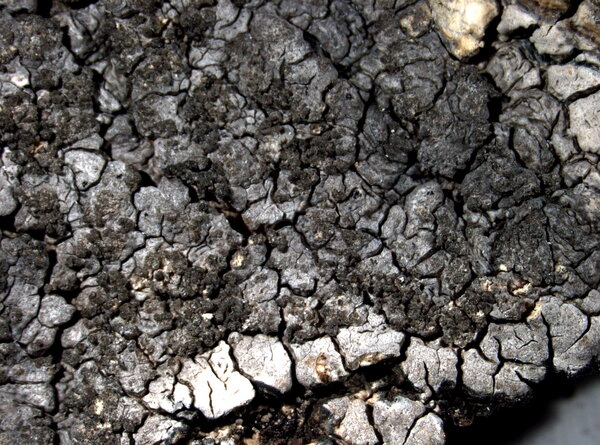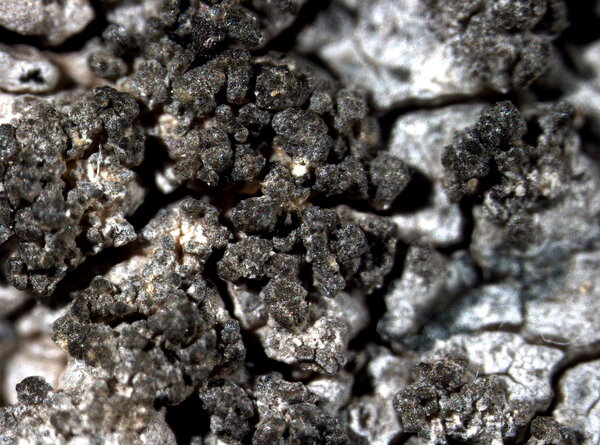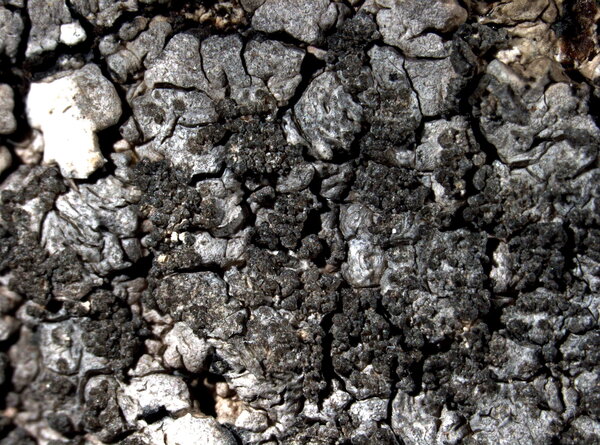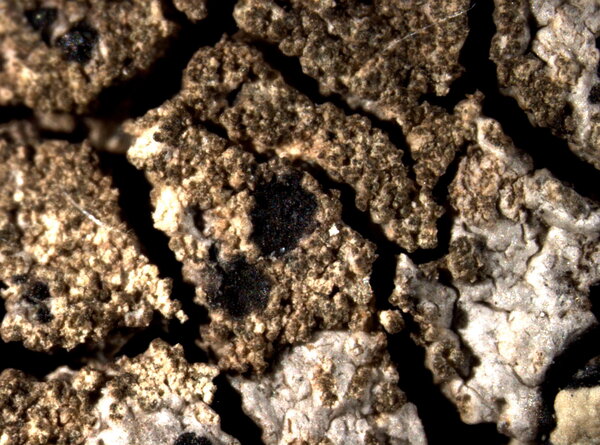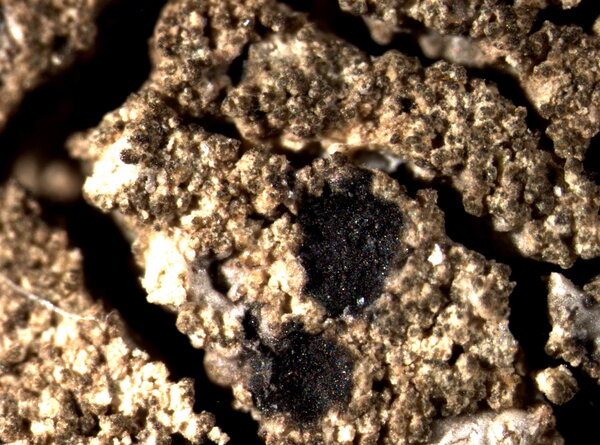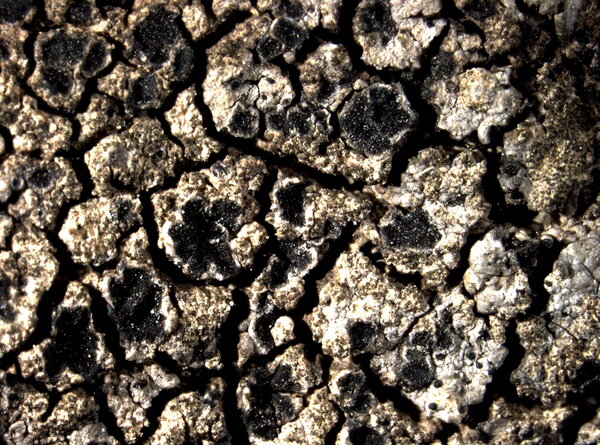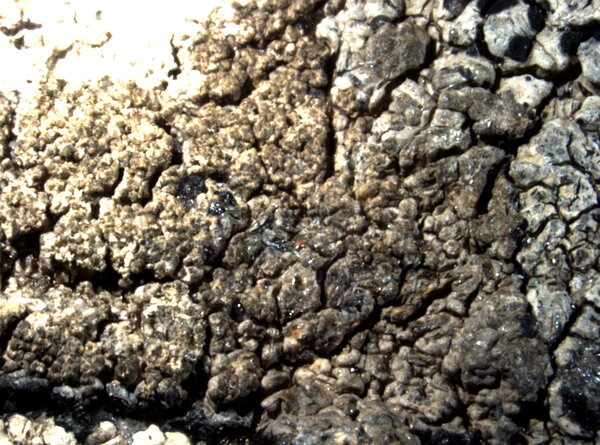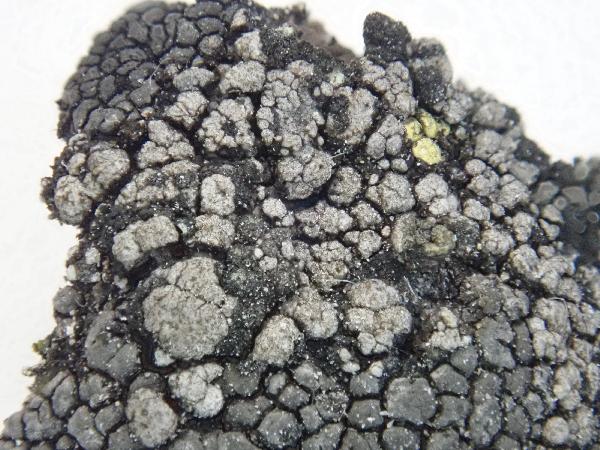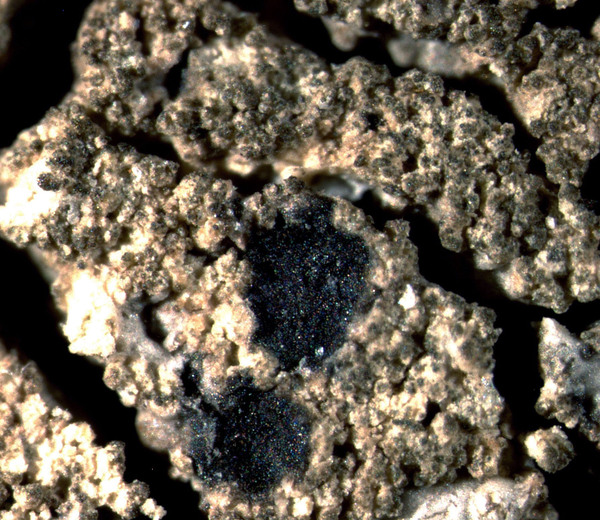Sagedia simoënsis (Räsänen) A. Nordin, Savić & Tibell
Mycologia, 102: 1346, 2010. Basionym: Aspicilia simoënsis Räsänen - Meddeland. Soc. Fauna Fl. Fenn., 1: 39, 1925.
Synonyms: Aspicilia montana (H. Magn.) Creveld; Lecanora bahusiensis H. Magn.; Lecanora isidiata (H. Magn.) H. Magn.; Lecanora simoënsis (Räsänen) Zahlbr.; Lecanora simoënsis var. isidiata H. Magn.; Lecanora variegatula H. Magn.
Distribution: N - Ven (Nascimbene 2003), TAA (Nascimbene 2004, Nascimbene & al. 2022), VA (Favero-Longo & al. 2006, Isocrono & al. 2008, Favero-Longo & Piervittori 2009), Emil. C - Sar. S - Si.
Description: Thallus crustose, episubstratic, areolate, pale grey to grey, sorediate-isidiate, the areoles angular, 0.3-0.5 mm wide, often finely subdivided into smaller units, bearing orbicular, well-delimited, dense clusters of coarsely granular to coralloid, dark grey isidioid outgrowths later breaking down into soredia-like propagules. Uppermost layer of cortex without the Subdepressa-brown pigment; medulla white, I-. Apothecia rare, lecanorine-aspicilioid, 0.4-1 mm across, immersed in the thallus, with a concave to flat, black disc and a thin thalline rim. Epithecium olive-green, N+ emerald green; hymenium colourless; paraphyses simple or sparingly branched, anastomosing, moniliform in upper part, the apical cells up to 3 µm wide; hypothecium colourless. Asci 8-spored, clavate, the thin outer coat K/I+ blue, the wall and the apical dome K/I-. Ascospores 1-celled, hyaline, ellipsoid, 15-22 x 8-12 µm. Photobiont chlorococcoid. Spot tests: thallus K+ yellow turning red (needle-like red crystals) or rarely K+ yellow-orange, C-, KC-, P+ bright to golden yellow. Chemistry: norstictic acid and/or stictic acid. Note: a mostly sterile species with areolate thallus reacting K+ red, described from Finland as sorediate; the populations from the Alps have dense clusters of isidia later breaking down into soredia-like propagules (fitting Lecanora simoënsis var. isidiata H. Magn.). It grows on siliceous boulders visited by birds and is widely distributed, at least in the eastern Alps. The record from Sicily (see Nimis 1993: 105), if confirmed, would suggest that the species should be looked for more intensively along the Apennines, in areas with siliceous substrata.
Growth form: Crustose
Substrata: rocks
Photobiont: green algae other than Trentepohlia
Reproductive strategy: mainly asexual, by isidia, or isidia-like structures (e.g. schizidia)
Commonnes-rarity: (info)
Alpine belt: absent
Subalpine belt: very rare
Oromediterranean belt: absent
Montane belt: very rare
Submediterranean belt: absent
Padanian area: absent
Humid submediterranean belt: absent
Humid mediterranean belt: absent
Dry mediterranean belt: absent
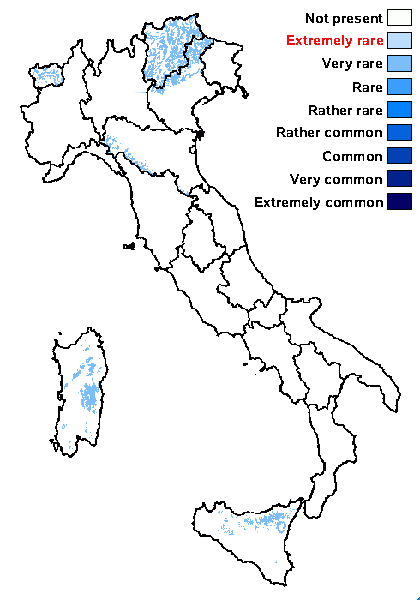
Predictive model
Herbarium samples
Growth form: Crustose
Substrata: rocks
Photobiont: green algae other than Trentepohlia
Reproductive strategy: mainly asexual, by isidia, or isidia-like structures (e.g. schizidia)
Commonnes-rarity: (info)
Alpine belt: absent
Subalpine belt: very rare
Oromediterranean belt: absent
Montane belt: very rare
Submediterranean belt: absent
Padanian area: absent
Humid submediterranean belt: absent
Humid mediterranean belt: absent
Dry mediterranean belt: absent

Predictive model
| Herbarium samples |
 INDEX FUNGORUM
INDEX FUNGORUM
 GBIF
GBIF
 DOLICHENS
DOLICHENS

